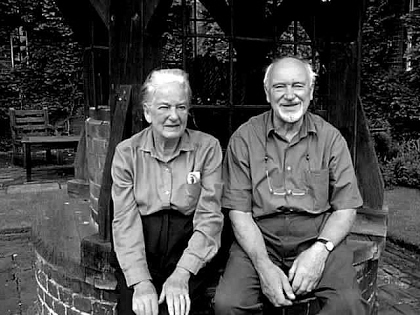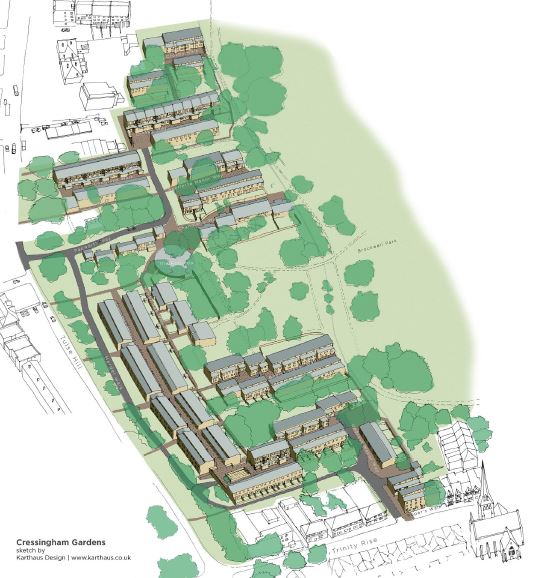Ted Hollamby was a celebrated architect, he was awarded an OBE in 1970. He was well known for designing a number of housing estates in London. His architectural vision led to the design of Cressingham Gardens. Municipal Dreams note that, “In the sixties, Hollamby and Lambeth Council worked harmoniously at the cutting edge of housing and planning policy, pioneering the extensive use of rehabilitation and infill housing …Cressingham Gardens takes its place in this pantheon.” In some ways it can be seen as his signature work and Cressingham Voices can give legacy to that work.
He achieved notability for restoring the Red House, designed by William Morris and Philip Webb in 1859. In 1952, he moved with his family to the Red House in Bexleyheath and began to renovate and restore it. Left leaning and a fan of the house’s original inhabitant, he became involved activities of the William Morris Society. He continued restoring Red House in later life, opening it up to visitors and establishing the Friends of Red House charity in 1998.

Ted Hollamby and his wife Doris in the garden at the Red House
From 1969 to 1981 Ted Hollamby worked as Director of Architecture, Planning and Development for the London Borough of Lambeth, before moving to work for the London Docklands Development Corporation from 1981 to 1985.
There is no doubt that Hollamby’s socialism influenced his views on the design of Cressingham Gardens, he was committed not only to provide new housing but establish the potential for a community evident in his own words in the original design brochure where he states,
“It is proposed to provide all the accommodation needed in low rise dwellings. This will avoid any visual obtrusion on the views from Brockwell Park. Part of the plateau has been kept clear of buildings to extend the landscape of the Park into the site.
The buildings are arranged around this in such a way that the lower buildings are adjacent to it with the height increasing to a maximum of four storeys around the perimeter of the site away from the park.
Among these buildings as many of the existing trees as possible will be retained and where necessary will be reinforced by new planting. Along the Tulse Hill frontage virtually all the trees adjacent to the boundary will be retained.
Vehicles generally are kept to the perimeter of the site, one short service road being provided to serve the Northern part of the site including the nursery school. A longer one having access onto both Tulse Hill and Trinity Rise serves the remainder of the scheme.
Within the site access to the dwellings is entirely pedestrian although provision will be made for fire brigade vehicles, ambulances etc to get close to all dwellings in emergencies.”

A plan of the estate © Karthaus Design Ltd, Cressingham Gardens Outline Redevelopment Options Study
Ted Hollamby lived from 8 January 1921 to 29 December 1999. He will have witnessed the mounting Housing Crisis which is now headline news, a crisis that followed directly from the 1988 Housing Act which scraped fair rents for private properties, further promoted the right to buy and restricted councils from house building. His legacy can live on in the preservation of his work, regeneration of well functioning estates like Cressingham Gardens is surely not the solution to the housing crisis. In an obituary in The Guardian Hollamby was described as
“very much an architect of the 20th century, a public servant who believed not just in high quality architecture but in the existence and nurturing of the public realm, of public architecture and civic design. If these words sound old fashioned, that is because Hollamby, educated first at the Hammersmith School of Arts & Crafts, was also a lifelong devotee of the great socialist arts & crafts thinker and doer, William Morris.” Jonathan Glancey, 24 January 2000.